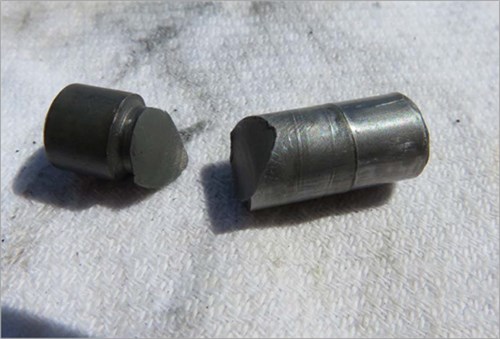A recent landing gear incident involving a Cessna 210 shows how as aircraft age, their original maintenance schedule may not be sufficient to ensure ongoing safety.
The Cessna 210, returning from a scenic flight with five passengers on board, was approaching to land at Kununurra Airport, Western Australia.
During the approach, the pilot selected the landing gear down but the landing gear down indicator light did not illuminate. The right and left main landing gear appeared to be down and locked but the pilot was unable to see the nose landing gear.
The pilot completed the relevant checklists and conducted a low-level pass over the runway so the aircraft’s operator could see from the ground if the landing gear was down.
As aircraft age, the original maintenance schedules may not be sufficient to ensure the aircraft’s ongoing safety.
The operator observed the landing gear and reported to the pilot that the landing gear appeared to be in the down position. The pilot returned for a landing on runway 12.
On landing, the main landing gear wheels touched down first. The pilot held full back pressure on the elevator controls to hold the nose wheel off the runway for as long as possible. After about 100 m, the nose of the aircraft sank on to the runway. At this point, the nose wheel collapsed, the propeller struck the runway, and the aircraft came to a stop. The pilot and five passengers were uninjured. The aircraft sustained minor damage, including damage to the propeller, nose wheel, and engine cowling.
The aircraft was last flown about three weeks before this incident, and the pilot reported that there was no outstanding maintenance.
This aircraft was manufactured in 1976 and, and at the time had 9,965 hours total time in service. The owner’s investigation into the incident determined that one of the nose landing gear down lock pins had failed. The pin failed in the area of the machined groove for the pin retention roll pin . The failed down lock pin migrated out and interfered with the nose landing gear actuator. This movement prevented the nose landing gear down lock mechanism from engaging in the down and locked position.
Failed nose landing gear downlock pin

Source: Aircraft owner
The Cessna nose landing gear downlock actuator pins have had a history of cracking and failing. In response, Cessna recommended the inspection of the pins to determine their safety.
Safety message
The incident highlights the importance of comprehensive, periodic maintenance inspections. It also shows the role manufacturers have in the continuing airworthiness instructions for maintaining ageing aircraft. As aircraft age, the original maintenance schedules may not be sufficient to ensure the aircraft’s ongoing safety. As a result of investigation report AO-2011-115 the ATSB encourages registration holders of class B aircraft to review their aircraft’s maintenance schedule to determine if it is the most appropriate for their aircraft and to ensure that it adequately provides for the continuing airworthiness of the aircraft.
In 2007, the ATSB released research report How Old is Too Old? The impact of ageing aircraft on aviation safety. The report found that some aircraft manufacturers have recognised that the original maintenance schedules may not be sufficient to ensure the aircraft’s (ongoing) safety. Those manufacturers have developed additional continuing airworthiness information.
In 2012, in recognition of the Australian general aviation aging aircraft fleet, CASA released a discussion paper Ageing Aircraft Management Plan (AAMP). The discussion paper makes the following relevant points:
- As an aircraft ages up to and beyond its original design assumptions, the nominated maintenance program needs to be modified to take into account ageing issues. In particular, inspections of key areas or components not usually accessed.
- CASA and Authorised Persons are obliged to take into account all relevant maintenance data or information pertinent to a particular aircraft type. This includes manufacturer’s data, Airworthiness Directives, Service Bulletins and other continuing airworthiness information.
- CASA Maintenance Schedule 5 was originally conceived as a minimum schedule of maintenance activities, to be undertaken on a very limited range of relatively simple, ‘orphan’ aircraft
- CASA Maintenance Schedule 5 was not originally intended to address ageing aircraft related issues. The literal application of this schedule on its own was not intended to replace the manufacturer’s instructions for continued airworthiness, where available.
The adequate maintenance of ageing aircraft requires the participation and ongoing cooperation of aircraft manufacturers, regulatory authorities, owners, operators, and maintainers.
Read the final report: Landing gear malfunction involving a Cessna 210, VH-SMP, at Kununurra Airport, Western Australia, on 1 February 2015


